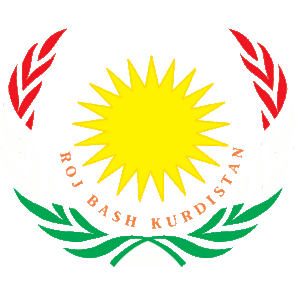
BERLIN, Germany – For almost four decades, Kurdish author and historian Jamal Khaznadar has been working on creating an encyclopedia for Kurdish journalism.
Khaznadar, who has been living in Germany for 17 years, says that he is writing the history of Kurdish newspapers from 1898 to 2010 in 12 stages.
“I am hoping to record the history of Kurdish journalism and archive it to prevent it from disappearing,” Khaznadar told Rudaw.
He added, “I will work on it as long as I am alive.”
Khaznadar said the idea for an organized archive of Kurdish newspapers published in the past 115 years came to him in 1968, when he held a copy of the first ever Kurdish newspaper published in Cairo in 1898, named The Kurdistan Newspaper.
“I had never seen the newspaper prior to that date,” said Khaznadar. “However, in 1968 through the Al Takhi and Birayatee newspapers, I saw [The Kurdistan Newspaper] for the first time. Back then, my brother Dr. Marif Khaznadar republished four pages of the newspaper.”
In 1973, in Baghdad, the Khaznadar brothers tried to hold a festival for the 75th anniversary of the publication of the first Kurdish newspaper and decided to name April 22 as a day for Kurdish journalism. But, according to Khaznadar, Iraqi authorities cancelled the festival at the last minute.
“Unfortunately, the Iraqi Ministry of Culture cancelled the festival,” Khaznadar said. “They asked us to only address the newspapers that were issued in Iraq. They said The Kurdistan Newspaper was issued outside Iraq, and therefore irrelative to Iraq, and that we should not talk about it. However, that made me continue working on this subject.”
Khaznadar’s project is not specific to publications from Iraqi Kurdistan alone. Since his time in Baghdad, he has been collecting thousands of newspapers and other memorabilia from Kurdish journalists.
“When I had my archive in Baghdad, I had 1,000 newspapers and magazines,” he said. “The newspapers and magazines were not limited to those published in Iraqi Kurdistan. I had newspaper and magazines from other parts of Kurdistan as well. In my archive there are some rare pictures, cameras and the spectacles and pens of old journalists.”
When he fled to Europe in 1995, Khaznadar left the entire archive behind in Baghdad. Only nine years later, after the collapse of Saddam Hussein’s regime, was he able to relocate his archive to Erbil.
“In 1995, I sent a letter to Massoud Barzani [current president of the Kurdistan Region] and Jalal Talabani [current Iraqi president] and asked them to help protect the archive or relocate it to Erbil,” he said.
“Later I found out that my letter had never reached Talabani, but Barzani replied to my letter after two years,” Khaznadar said, adding that he was able to finally relocate the archive to Erbil in 2004. “I would like to say that President Barzani had an outstanding attitude towards the archive and cared a lot about protecting it. I appreciate his attention to the matter.”
Khaznadar’s archive is currently kept in his old family home, but the governor of Erbil has offered him space inside the ancient citadel where he can transfer and preserve the archive.
“I am proud to say that I provide all the financial responsibility for preserving the archive,” Khaznadar said. “Mr. Nawzad Hadi, governor of Erbil, has provided us with a house in the old citadel, but the house does not have doors and windows. The house needs renovation which will cost a lot. I do not want the house.”
Khaznadar says he has officially registered his project with the authorities in both Kurdistan and Germany.
“In Kurdistan and Germany, we operate officially,” he said. “In 1998, I managed to turn the archive into an official institute in Germany under the name of The Kurdish Journalism Research and Archive Center. The center is run by a board of Kurdish academics.”
However, he added that there are plans to make the main center based in Kurdistan, with Germany being a branch.


















